Inner Planets Reign
November 2019 will see its share of interesting events in the night sky. The event that will probably get the most attention but will be the hardest to see will be the rare transit of Mercury across the Sun’s disk on November 11th. Like an eclipse, a transit occurs when one of the inner planets pass between the Earth and Sun. Mercury’s orbit is tilted considerably compared to the plane of the solar system, so the planet almost always passes above or below the Earth-Sun line. On November 11, however, Mercury will have already begun its transit at sunrise, and will appear closest to the center of the Sun at 9:20 am Central time. It will appear to move off the Sun’s disk at about 12:04 pm. Remember that the Sun’s light is dangerous to your eyes- DO NOT LOOK DIRECTLY AT THE SUN WITH BINOCULARS OR TELESCOPES!! You must use binoculars or telescopes that have a safe, securely mounted solar filter in order to safely observe the transit.
You are probably thinking, “Why couldn’t I dig out my eclipse glasses from 2017?” Well, you can, except for one thing. In 2017, the Sun was 400 times farther away than the Moon but also 400 times larger, so the two appeared almost exactly the same size. The numbers don’t add up for a transit of Mercury, because it will appear just 1/194 the size of the Sun- way too small for the tiny black spot to be seen with the unaided eye. Good quality, steadily held or mounted binoculars or telescopes will be needed to glimpse the transit, of course using a safe solar filter. To be honest, I thought about not including the transit in this blog because of the difficulty of seeing it, but decided to put it in due to the rarity of the event, which might give it some possibly undeserved media attention. The next transit visible from the United States will not occur until May 7, 2049, so this will be the last chance for many of us, including probably me. Transits of Venus are much easier to spot but even rarer- the next one won’t take place until 2117!
After the transit, Mercury rather quickly emerges into the morning sky. Early risers can spot it if they can find an open view to the east-southeast horizon, about 6 am St. Louis time. Mercury appears as a fairly bright star but may be dimmed by the glow of dawn. The two weeks beginning around November 20th will be the best dates. Perhaps the easiest morning to spot it will be if skies are clear on the 24th- the crescent Moon will be above it. Also note dim Mars to the right of the Moon.
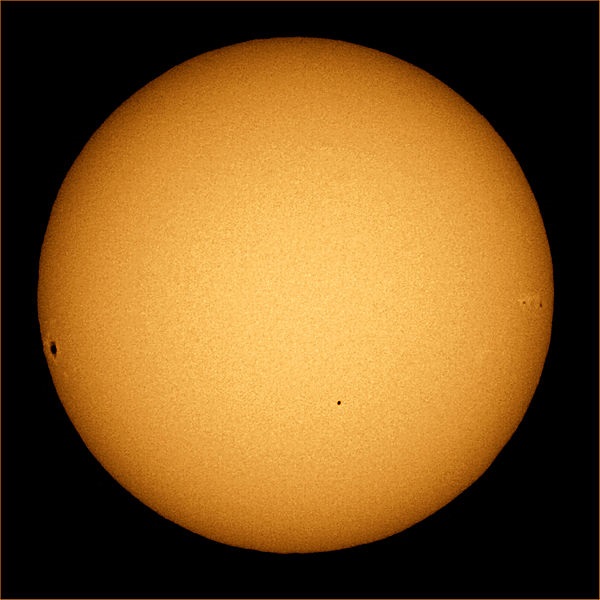
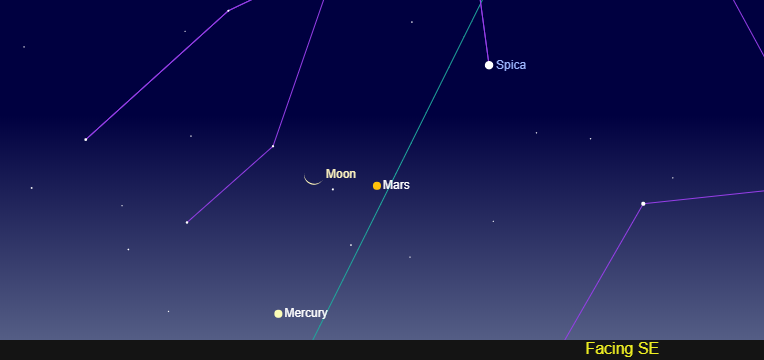
Note the tiny black disk of Mercury silhouetted on the Sun in the middle of this image of the 2016 transit. (Earth, Sea, and Sky) Mercury, Mars, and the crescent moon can be spotted the morning of November 24, low in the east to southeast about 6 am. (Sky & Telescope)
For those of you who prefer the evening sky, it will be easy to watch Venus and Jupiter draw together this month. Find a spot with an open view to the southwest about 30-45 minutes after sunset. Venus will be the brilliant object very low in the sky early in November, getting higher and closer to dimmer but still-bright Jupiter as the days pass. Saturn can be seen to the upper left of Jupiter, as the next fairly bright “star.” Venus & Jupiter will appear closest together the night of the 24th, with the pair joined by the thin evening crescent moon four nights later.
Losing the race to much faster moving Earth & Venus, Jupiter and Saturn will appear to drop ever farther to the lower right on our star maps, as they pass more and more on the far side of the Sun as seen from Earth. Jupiter will be lost in the Sun’s glare before mid-December. The ringed planet will soon follow, around Christmas, but before it goes, you can catch Venus passing Saturn around Dec. 11th. This will leave Venus to dominate the sky as our sole bright evening planet all winter and most of the spring- but what a brilliant show it will put on! More about that next month.
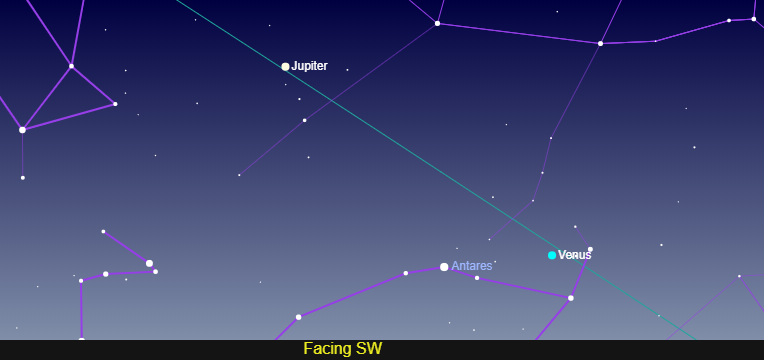
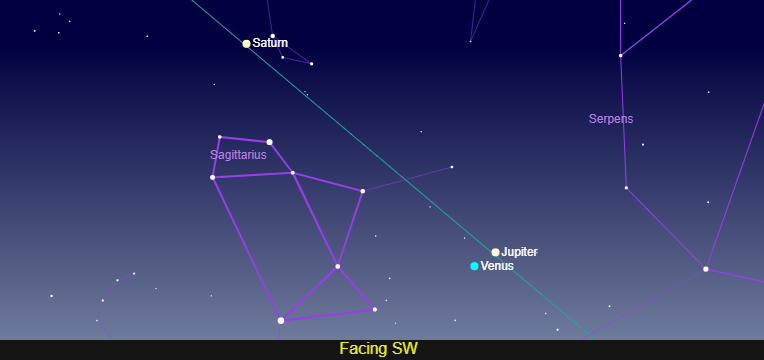
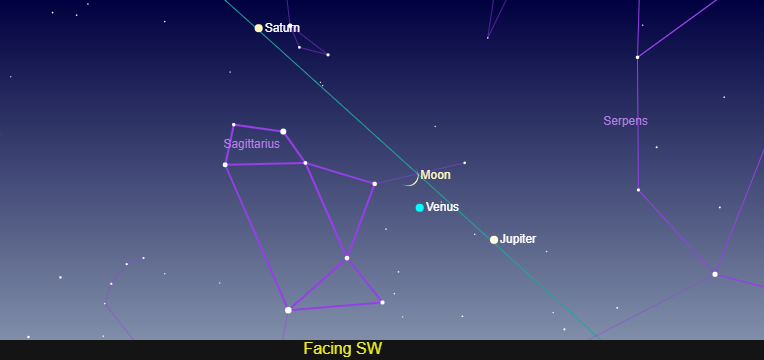
Southwestern sky, about 5:15-5:30 pm St. Louis time, Nov. 8 (top), Nov. 24 (middle) & Nov. 28 (bottom) (Sky & Telescope)
